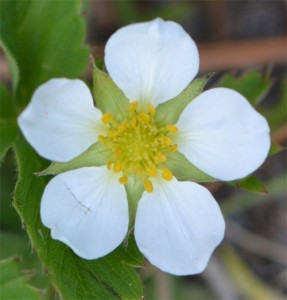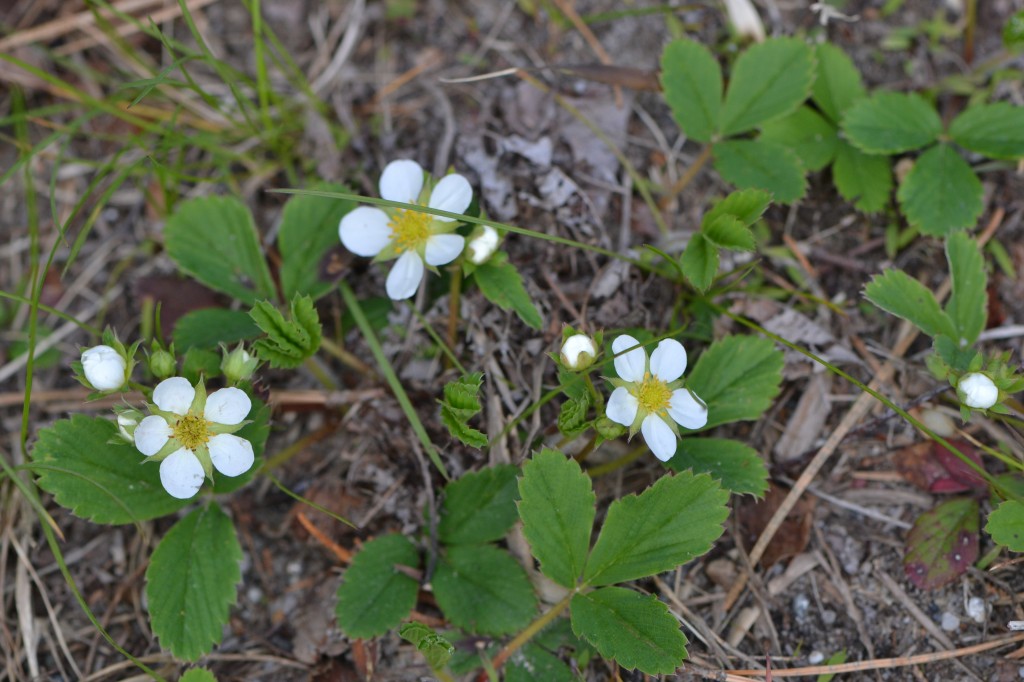 These strawberry plants are pretty much everywhere in my yard, although they definitely prefer the more sunlit areas. They don’t need an introduction here, but if you’re someone that thinks of them as annoying weeds, consider this: The ecological value of wild strawberry to various insects, birds, and animals is high. The flowers attract long-tongued bees, short-tongued bees, flies, small butterflies, and skippers. Among these, small bees are the most important pollinator of the flowers. The caterpillars of several species of moths feed on the foliage and flowers of Fragaria virginiana. Gamebirds (turkeys definitely), songbirds, and mammals eat the fruit or foliage.
These strawberry plants are pretty much everywhere in my yard, although they definitely prefer the more sunlit areas. They don’t need an introduction here, but if you’re someone that thinks of them as annoying weeds, consider this: The ecological value of wild strawberry to various insects, birds, and animals is high. The flowers attract long-tongued bees, short-tongued bees, flies, small butterflies, and skippers. Among these, small bees are the most important pollinator of the flowers. The caterpillars of several species of moths feed on the foliage and flowers of Fragaria virginiana. Gamebirds (turkeys definitely), songbirds, and mammals eat the fruit or foliage.

Flowering Fragaria virginiana May 14 2011
Of course, people would like these tiny little fruits too, and there are many recipes available online. Berries may be in short supply though, because animals will likely get them before you get a chance. If you are serious about harvesting wild strawberries, caging or netting may be something you need to consider.
| Scientific name: | Fragaria virginiana |
| Common name: | wild strawberry |
| Other name: | virginia strawberry |
| Bloom time: | mid spring |
| Color: | white to near white |
| Light requirements: | full sun |
| Zone: | 2 to 9 |
| Soil: | strongly acidic to mildly alkaline |
| Water: | N/A |
| Origin: | United States and Canada |
Leave a Reply